
20 minute read
COMMUNITY
from AUGUST 2021
Gayming in Galveston
Johnny Steverson previews this year’s Island Esports expo.
By ZACH McKENZIE
When thinking about a typical gaming expo, scenes of large exhibit halls packed with guests come to mind, with everyone clambering to get their hands on the latest pieces of technology. The Galveston Island Esports Summit co-owners Johnny Steverson and Mary Jo Naschke are breaking that mold as they aim to create an inclusive and empowering space for all who attend the August 27-29 event.
“First and foremost, we wanted to create a home for all the people who love video games,” says Steverson, an openly gay esports enthusiast.
Naschke adds, “I had been following esports for a while, and it wasn’t as mysterious as I thought. I started looking around and reading magazine articles about esports, and realized you didn’t have to be a professional to be into it. Everyone plays games on their phones and iPads. This event is a way for people to network socially with like-minded people, as opposed to being isolated and by themselves.”
The Esports Summit’s theme of inclusion is one that the two entrepreneurs have intentionally created. “We are all about [removing] boundaries when it comes to diversity,” says Naschke. “Special Olympics Texas is putting together a team that will come and compete, and the U.S. Army is also going to bring a team.”
The dynamic duo is also focused on encouraging personal and professional development opportunities for attendees. “We focus on female empowerment, and [promoting science, technology, engineering, and mathematics (STEM) careers] for females,” Steverson adds excitedly. “We align with other organizations that help us promote that cause.”
Getting esports incorporated in the gradeschool curriculum is another priority for Steverson and Naschke. “On Friday, there will be a teachers’ esports workshop sponsored by Galveston ISD, and we’re thrilled to partner with them,” Naschke says.
“I’m a huge gamer, and this whole esports and gaming thing has come to the forefront during the pandemic,” Steverson adds. “When I was in school, there were no esports departments, but today more schools are incorporating it into their curriculum. Our teacher workshops [will also help] educators incorporate STEM programs into their school districts. It’s going to give them the opportunity to earn continuing-education credits and find the tools to educate their students in new and exciting ways.”
“NASA will have a strong presence at our Esports Summit, and we are going to introduce robotics to this event, ahead of our Robotics Summit in November,” Naschke notes.
Guests are encouraged to buy a day pass so they can play games—new, old, and retro—all day, in between the short, informative panel discussions with celebrity guests. And it all happens in a cool and calm environment that encourages personal interactions. “We weren’t interested in an event with 50,000 people roaming around and standing in long lines,” Naschke says. “[We chose Galveston because] we wanted an intimate environment that was fun, next to the beach, and allows guests to get up close to the exhibits without being rushed,” Steverson adds. “Guests will be able to go up to the panelists and ask questions, and that’s what this event is all about. The networking at our event is unparalleled, compared to what else is out there right now. You can get one-onone time and really feel part of this community.” Naschke puts it simply: “We wanna be the best, not the biggest.”
Robot battles, surprise guests, virtual reality, a visit from the Mars Rover, and lots of educational opportunities are all sure to make this event a huge success. “This event is for anyone that loves video games, not just competitive players,” Steverson adds. “[We have lots of] things to do for people that aren’t interested in competing in esports tournaments.”
LGBTQ players should feel especially welcome at this event, according to Steverson. “It means the world to me to give a home to ‘gaymers’ who aren’t necessarily the type to go out in groups—people like myself who are more internal and like to play video games. It means so much to give people the opportunity to come and network in a safe and fun environment.”
Seany Smiles just wanted a way to pass the time during the COVID-19 pandemic. Little did he know that the online modeling game he created would spread far beyond Houston, gaining a worldwide following of thousands.
“I really never expected this,” he says. “It has been absolutely amazing to see this grow.”
Smiles, who has lived in Houston for more than five years, is the creator of Seany’s Next Top Model, an online modeling competition similar to Tyra Banks’ America’s Next Top Model. The game, which is in its fourth season, has around 15 players (“models”) who compete in weekly photo challenges until a winner is eventually crowned.
Smiles’ own modeling and professional photography experience began when he was approached by a prominent LGBTQ photographer in Houston.
“I was honestly shocked that someone would ask me to model for them,” he recalls. “The project I was a part of was called As Is, and the photographer really did just that—he photographed all types of guys as is, regardless of how their body looked.”
The photo shoot changed his outlook about modeling, and he realized that anyone can have a positive experience as a model.
“It made me realize that you don’t have to be a perfect 10 by Hollywood standards to be a model,” he emphasizes. “I always thought in order to be a model or be in magazines, you had to be this stereotypical gorgeous, muscular man. But it turns out that is not the case at all.”
Soon after the As Is project, Smiles started exploring modeling and creative photography. That’s when ideas for creating a competitive online modeling game quickly started swirling in his head.
“I wanted to find a way to stay in a creative headspace during lockdown, and to help my friends do the same,” he says.
The first season of Seany’s Next Top Model had a more casual feel to it, with Smiles mainly casting Houston locals and a few online friends. By the third season, however, the photo challenges became more advanced as the overall competition structure became more regimented.
“Originally, I made it so that the game was very quarantine-friendly, and all the photo challenges could be done at home without spending much money,” he says. “I obviously did that so people would have easy access to playing, and nobody was putting themselves at risk by going out in public. Now that things are mostly back to normal, though, I am no longer limited on what kind of photo challenges I give my models each season.”
When it comes to the players who participate, Smiles makes sure the casting process is open to anyone.
“I have cast people of all types of backgrounds, ages, races, gender identities, and body types,” he says. “I have even cast people with disabilities. This competition is really open to anyone and everyone, and my casting process is entirely based on a person’s commitment and the willingness to learn and grow, rather than what they look like or where they come from.”
With the competition gaining international attention and close to 3,000 members on the official Facebook page, Smiles is still in shock over how far it has come.
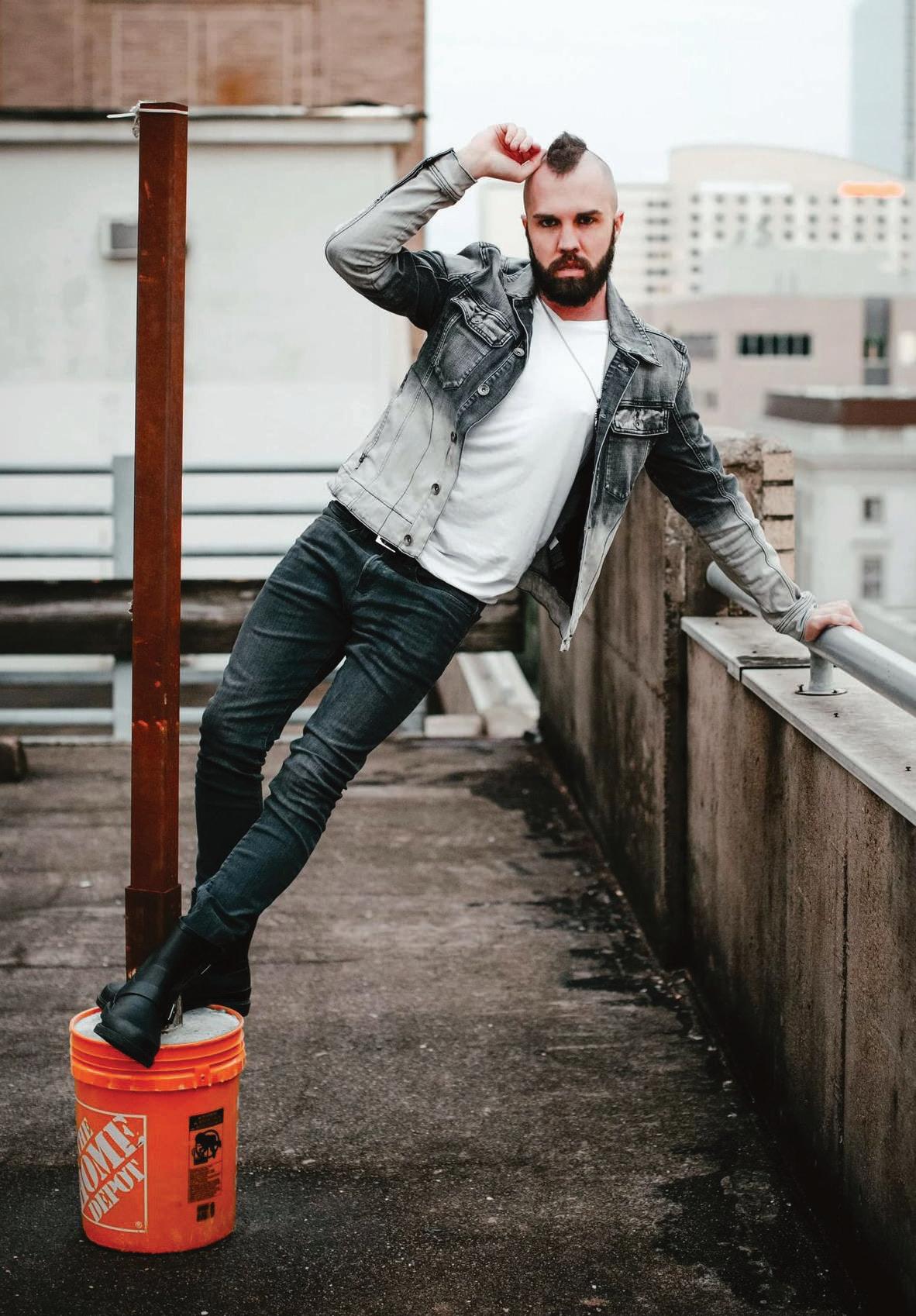
Model Maker
Seany Smiles’ online modeling competition garners an international following.
By CONNOR BEHRENS
“I am very surprised, but very happy,” he says. “This all began as a simple idea to keep me and my friends occupied during quarantine. I never thought it would catch on the way that it has and become a widespread global sensation. Each season keeps getting bigger and better, too. I am extremely humbled.”
Smiles believes the best aspect of his competition is watching the models gain more self-confidence and loving who they are—inside and out.
“You can be a model, no matter who you are,” he says. “I personally believe everyone has an inner model just waiting to be released.”
Going forward, Smiles has plans to expand the game into a live local event featuring new and existing players who travel to Houston and do competitive photo challenges in person.
“I am really interested in doing a live version of the game,” he says. “It would basically be a whole weekend [with all the players working on] various photo shoots around Houston. I am very curious to see how that would turn out.”
Smiles is also working to make the online viewing experience more accessible. “One of my goals is to find new ways of attracting viewers,” he says. “I would love it if I could create a YouTube channel, or just expand the game past the Facebook group so that more people have the ability to follow along and celebrate the photos my models create.”
As the recently crowned Mr. Gay Pride Houston 2021, Smiles is positively impacting both the Houston community and communities across the world with his online modeling game.
“The most beautiful thing about all of this is that I have created a unique platform that empowers people of all backgrounds to break out of their comfort zone and release their inner model,” he says. “I am so grateful that the game has such a positive impact on players and viewers alike.”
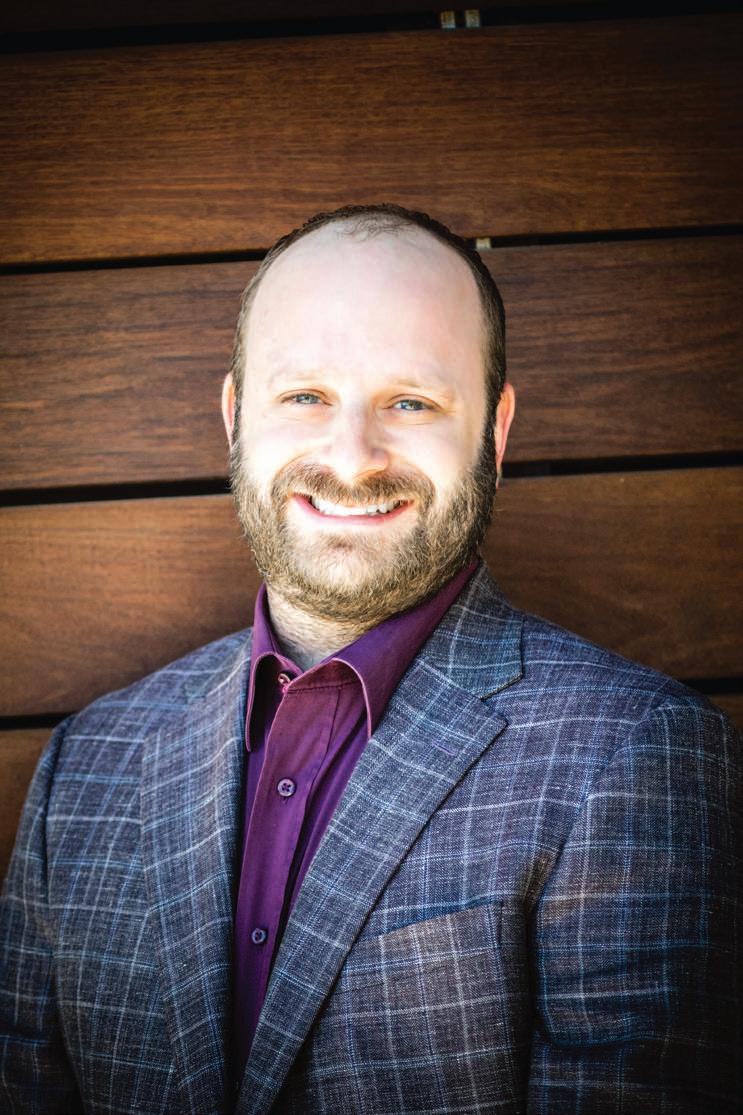

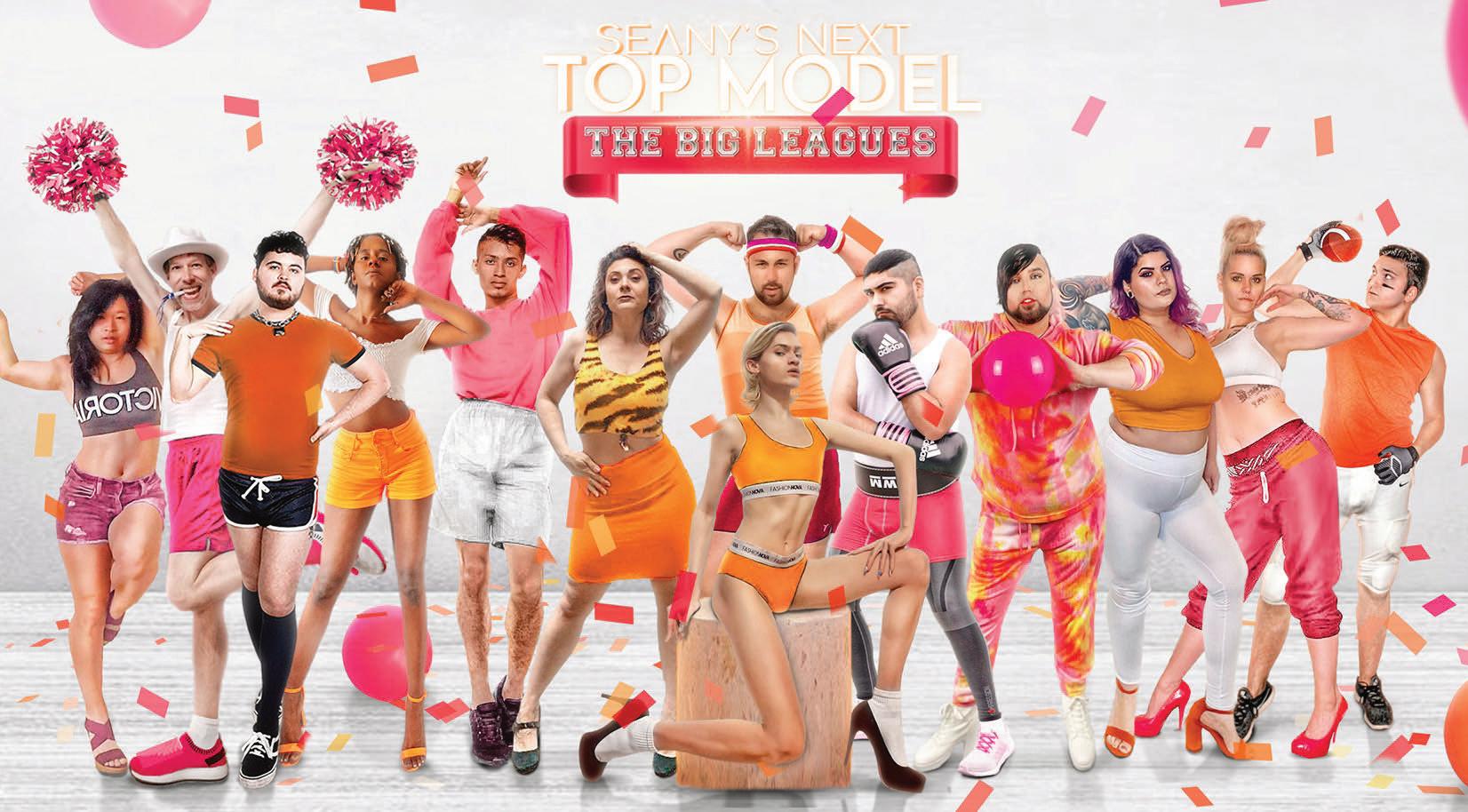
The Cycle 4 cast of Seany’s Next Top Model.
To learn more about Seany’s Next Top Model, go to the official Facebook page at facebook.com/groups/seanys.next.top.model
I'vejoined Compass.
I'vejoined Whenyou'relookingforatrusted Compass. resourceintheHoustonrealestate market,I'maphonecallaway! Whenyou'relookingforatrusted resourceintheHoustonrealestate market,I'maphonecallaway!
DavidBatgower RealtorAssociate® DavidBatgower RealtorAssociate®
BayouCityPropertyGroupatCompass BayouCityPropertyGroupatCompass david.batgower@compass.com david.batgower@compass.com 713-253-8609 713-253-8609

The Glitz and Glamour Returns
Miss Gay Texas USofA Pageant celebrates 35 years this month.
It’s time for the 35th anniversary of the Miss Gay Texas USofA pageant. All the glitz, glamour, and fun will be right here in Houston August 24 through 27, with preliminary competitions at Neon Boots and the final event at The Ballroom at Bayou Place downtown.
Looking back over the decades, state pageant promoter Craig Henderson marvels at how far we have come in 35 years. “Back then, some gay bars wouldn’t let drag queens in. Now every gay bar has drag shows. As for the pageant, the talent portion has certainly progressed. The dance performances are choreographed, and they spend months rehearsing them. They’re like Las Vegas reviews, and it’s not uncommon now to see contestants in the gown competition with three-, four-, five-thousand-dollar gowns.”
Henderson took over the state pageant duties 25 years ago after he met Pearland native Jerry Bird and fell in love with drag-queen pageants. Bird produced the first Miss Gay Houston pageant and then expanded it to the rest of the state before buying the entire Miss Gay USofA pageant in 1985. That franchise now includes Mr. Gay USofA, Mr. Gay USofA at Large (for contestants over 200 pounds), Miss Gay Black USofA, Mr. Gay Black USofA, and Mister USofA MI (with the MI standing for Male Impersonator).
“What I really love about it is the people I meet in the pageants,” says Henderson. “I’ve met almost all my friends there. I just like to make people smile and have a good time for a few hours.”
The Miss Gay Texas USofA contest is open to any Texan over 21 years of age who was assigned male at birth. Henderson notes another big change over the years: some 40 percent of today’s contestants are transgender women.
There will be thirty contestants this year (the winners of regional contests across Texas), and Henderson expects a few hundred spectators for the preliminaries at Neon Boots and 800 for the final night at The Ballroom at Bayou Place. Tables are already sold out, but there will be single tickets for $50 available at the door.
“I think that’s pretty fantastic, coming off of COVID,” says Henderson. “We had to cancel all the state and national pageants last year. I didn’t really know if we would have pageants ever again.”
Also onstage this year will be 25 former winners, including Dallas-born Kennedy Davenport, the current reigning Miss Gay USofA and runner-up in Season 7 of RuPaul’s Drag Race in 2015. Houston’s own Tommie Ross, the legendary performer who has won multiple titles including Miss Black America, Miss Gay of USofA, and Miss Continental, will also make an appearance.
There are three components of the Miss Gay Texas USofA pageant: the interview portion, the evening-gown competition, and the talent segment (which counts the most in judges’ ratings).
So, what kind of talent can you expect to see onstage? “Dance routines to remixes are the most popular,” says Henderson. “They are very professional. But really any kind of talent—[except acts] containing racial slurs and vulgar, obscene, or insulting language.”
Another thing you won’t see are contestants twirling flaming batons—an old-time staple of Texas beauty queens. “No fire of any kind,” says Henderson. “No glitter, water, or liquids of any kind. Most of the preliminary competitions are held at gay bars, and they have very strict safety measures. “I guess the oddest talent I’ve seen over the years was a contestant inside a glass box who sang a song while painting the inside of the box white. By the end of the song, you couldn’t see the contestant anymore. Some others do movie scenes, and a recent one did a Mary Poppins takeoff.” So who knows what you’ll see this year—but one thing is certain: there will be plenty of over-the-top glitz, glamour, and fashion that should make up for the last year of sitting around at home in your sweats and fuzzy slippers.
By MARENE GUSTIN
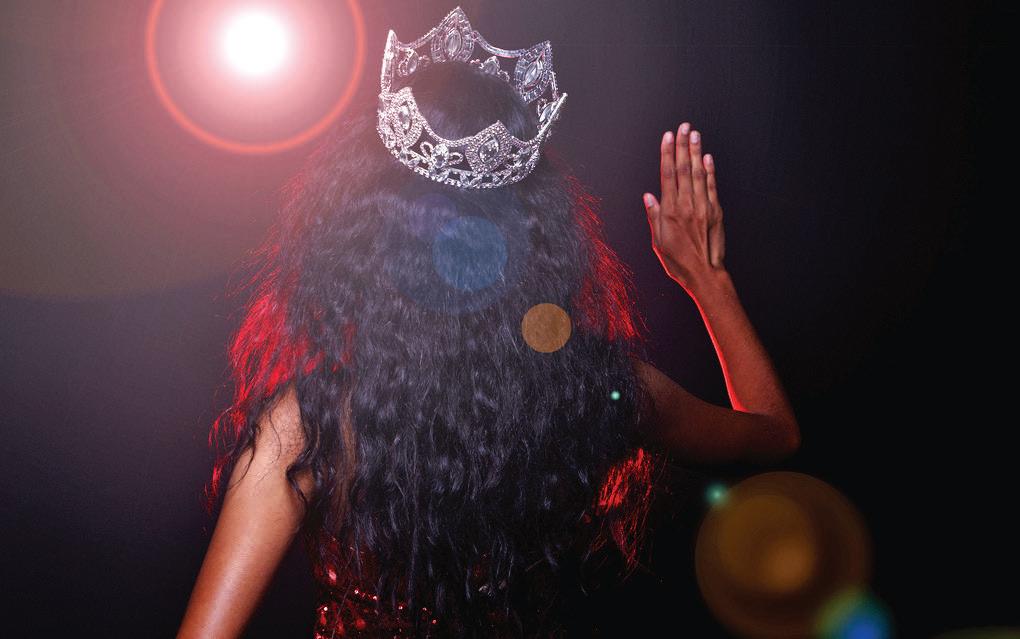
For more information, visit texasusofapageants.com
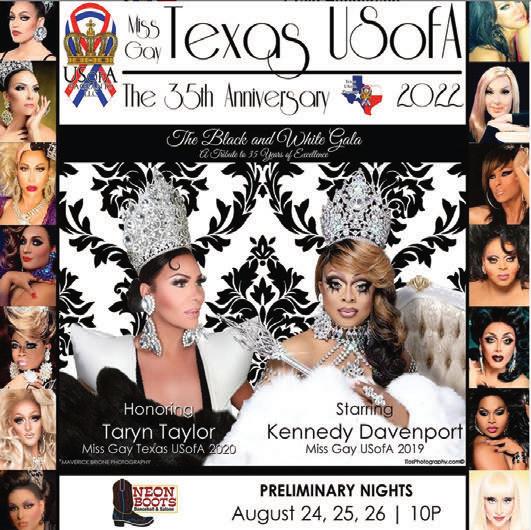
Can You Bring It: Bill T. Jones and D-Man in the Waters chronicles the creation of Bill T. Jones’ seminal 1989 work.
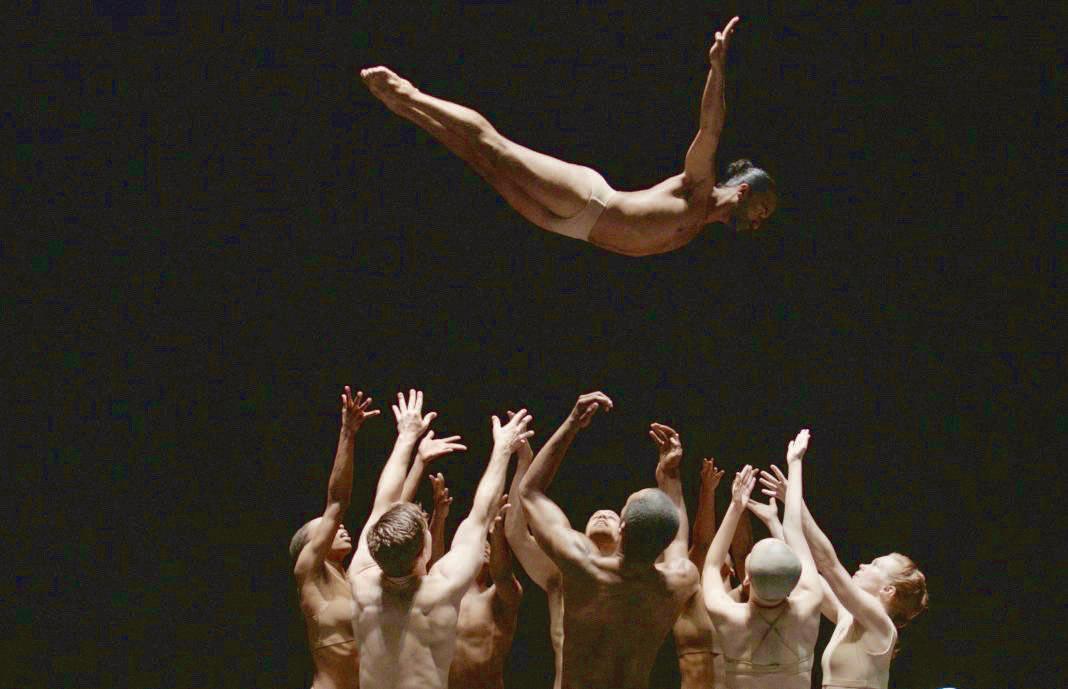
Choreographer Bill T. Jones is a true American master—the winner of two Tony Awards for his choreography on Broadway, and the recipient of a 1994 MacArthur Genius Award and a 2010 Kennedy Center Award. He is also an inspiration for people living with HIV as an openly gay Black man who has been living, and thriving, with HIV for decades.
A deeply moving new documentary, Can You Bring It: Bill T. Jones and D-Man in the Waters, examines a watershed moment in Jones’ life and career. In 1988, he lost his partner, Arnie Zane, to AIDS as the entire New York City arts world was reeling from that devastating health crisis.
The film chronicles the creation of his seminal 1989 work, D-Man in the Waters, a piece for nine dancers created in response to the AIDS crisis and Zane’s death. Set to Felix Mendelssohn’s Octet in E, the work went on to win a prestigious Bessie Award for choreographic excellence, and has been performed by two dozen companies and universities across the country. A second, parallel narrative in the documentary follows a group of young college dancers learning the work in present-day Los Angeles. Can You Bring It screens during the month of August as part of the Museum of Fine Arts, Houston’s Virtual Cinema Series at mfah. org/films.
A couple for 18 years, Jones and Zane founded two dance ensembles, including the Bill T. Jones/Arnie Zane Dance Company in 1982, which achieved renown as a postmodern dance troupe in the 1980s. Jones was a towering figure with electric magnetism who easily commanded the stage, while Zane was small and wiry—a choreographer and dancer with his own compelling charisma. They frequently performed together, and sparks flew.
“Arnie and I were a couple,” Jones explains in the film. “We were a continent of two: wife/ husband, business partners, on the great adventure.”
In a 1987 report on the PBS MacNeil/ Lehrer NewsHour, Zane came out as an artist living with AIDS in an era when many public figures living with HIV fought to keep that information private.
His death at the age of 39 was a devastating blow for Jones, and it presented an existential crisis for their dance company. Could Jones continue to create new work and sustain the company? At one point during the late 1980s, when so many around him were dying, Jones questioned if he himself would make it through
Courageous Choreography
New film honors choreographer Bill T. Jones’ gripping response to the AIDS crisis.
By ANDREW EDMONSON
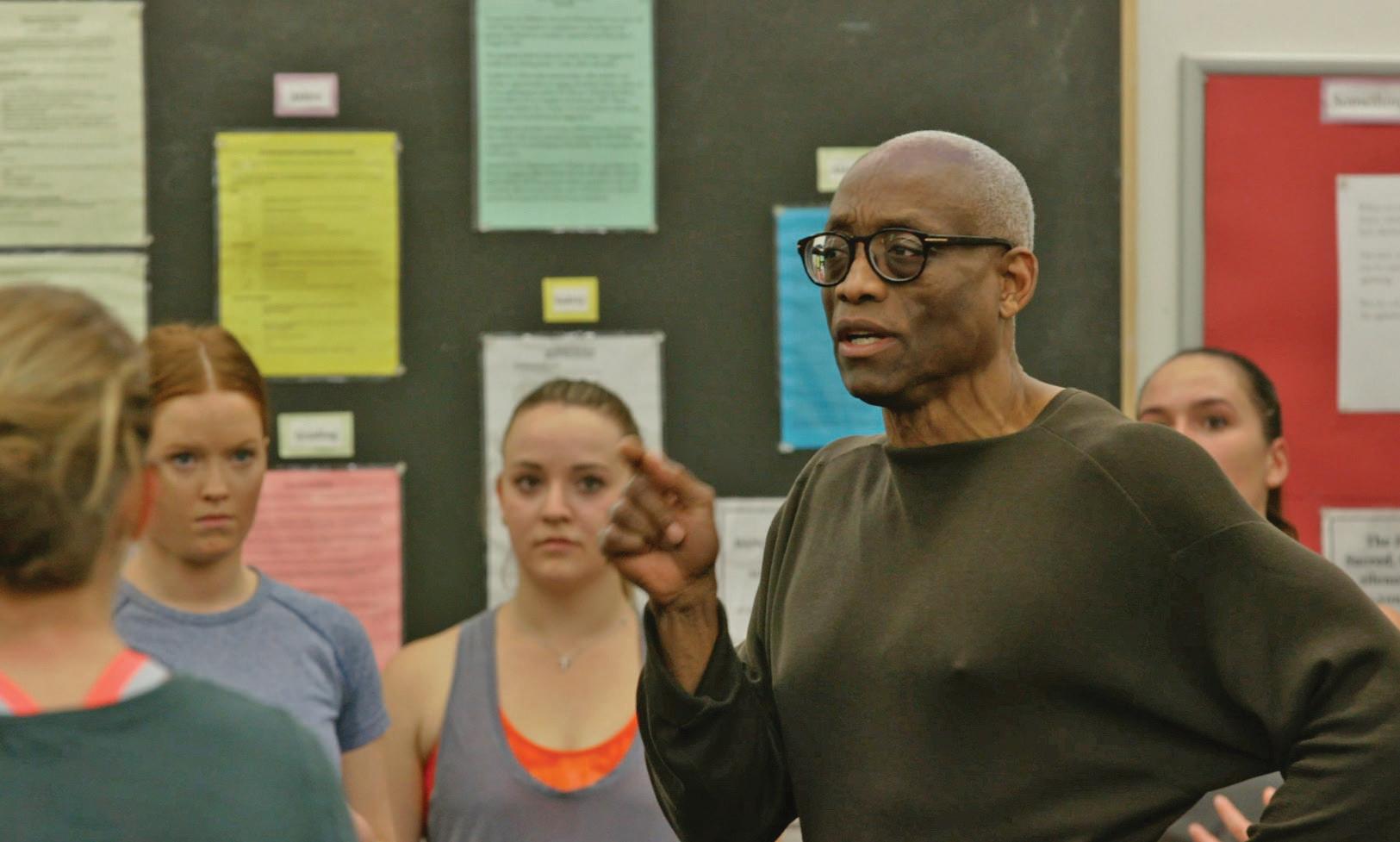
The great American choreographer Bill T. Jones coaches young dancers preparing for a recent performance of D-Man in the Waters.
the company’s next season of performances at the fabled Joyce Theater.
“We were very abandoned, lost, and afraid,” observes Jones in the film. “We were hurting. But work was a way to keep going. It was a place to grieve.”
Jones created D-Man in the Waters in response to the trauma of Zane’s death, just as the company was losing another dancer to HIV: Demian Acquavella, whose nickname in the troupe was D-Man. But far from being a somber dirge, the ballet is a joyous explosion of energy. Under the headline “Athletic Rapture in Quirky Metaphorical Waters,” New York Times Chief Dance Critic Anna Kisselgoff praised the work at its premiere as “the kind of piece that sets audiences cheering.” D-Man’s vibrant beauty and kinetic power are exquisitely captured in the documentary, thanks to the cinematography of the film’s co-director, Tom Hurwitz.
Three decades after its premiere, D-Man has lost none of its visceral, emotional impact. This becomes clear in another narrative strand of the film focusing on a group of young dancers at Loyola Marymount University as they set out to learn the work. The piece is staged by Rosalynde LeBlanc, a charismatic former dancer who performed D-Man with the Jones/Zane company in the 1990s. (She also serves as co-director and a co-producer of the documentary.)
“I became a dancer because I saw D-Man in the Waters when I was 16 years old,” LeBlanc recalls. “It is the most grueling dance I have ever performed. But it is probably the most exhilarating.”
In teaching the work, we see LeBlanc struggling to convey the enormity of the AIDS crisis to a group of mostly teenage dancers who have no memory of the devastation wrought by HIV in the 1980s.
To truly bring the work to life, the budding young artists must somehow recreate the fierce sense of emotional urgency that gripped the dancers of the Jones/Zane company three decades earlier. “What is our AIDS now?” LeBlanc asks the dancers. “What is going to make this piece more important than anything you do?”
Can You Bring It bears vivid witness to the transformative power of art in times of social crisis.
What: MFAH streams Can You Bring It When: through August Info: mfah.org/films



A Platform for the People
KHOU-TV journalist Briahn Hawkins wants to give the LGBTQ community a voice.
By LILLIAN HOANG
KHOU-TV’s Producer in Residence Briahn Hawkins is a nonbinary journalist who uses the high-profile local platform to uplift LGBTQ people.
“I pay extra attention to the transgender and gendernonconforming community because it’s still a new voice that people either haven’t listened to or actively ignore,” says Hawkins, who uses they/ them pronouns.
They want to cover more stories related to LGBTQ people and strengthen KHOU-11’s connection to the community beyond June Pride Month because, in their words, “Pride Month is every month, every day, every second, every moment.”
As a producer in residence, Hawkins writes stories for the station, takes notes during news conferences, and pitches stories. Although they mainly work in TV production and writing, Hawkins helps co-produce shows by pairing visuals with audio. They also go over stories with the anchors, making sure the newscasters are familiar with the content before airtime.
“It depends on the day,” Hawkins says. “My position is all over the place. We could produce for television, digital, or switch over to the marketing side of news.”
In June, they reviewed a script for a story about Q-Patrol, a Montrose volunteer group that was formed to protect members of the LGBTQ community after the brutal 1991 murder of Paul Broussard, a gay man who died after suburban teenagers attacked him outside a Houston nightclub.
“Up until that point, I had never heard about it,” the Houston native notes. “It was nice to read the script and see that [LGBTQ Houston history] come to life.”
Hawkins has always loved storytelling, and they found their calling in journalism at Trinity University in San Antonio. While they pursued a bachelor’s degree in communication and theater, they joined Trinity’s campus television station and discovered a passion for broadcasting.
“I thought doing TV would be more of a hobby,” Hawkins admits. “A few years later, I fell in love with working in TV because of all the magic.”
They loved conducting research for the campus TV station and figuring out how to write stories that viewers could understand and enjoy. They also loved giving others the spotlight to share personal experiences. “I wanted to be the platform people can use to speak out. I’m a human megaphone.”
Hawkins cemented their decision to become a journalist and platform for others during senior year, when they created a mini documentary about the experiences of Black students at Trinity. Hawkins wanted to capture the issues Black students faced, as well as educate people who were considering attending the college.

“It was not my intention to throw dirt on the school’s name, but to show people what it’s really like,” Hawkins notes.
After graduating in 2020, they applied to work at KHOU, Houston’s CBS network affiliate. They started working at the station right after the pandemic began, so they have only recently met their coworkers in person. Although there is a lot to learn about producing for local television, they’re excited to work in broadcast journalism.
“What I like the most about KHOU-11 is that even if we focus on a specific person, we also try to find ways to make the story helpful for all of our viewers,” Hawkins says. For example, KHOU-11 recently covered a series of stories about people who were followed home and robbed after stopping by upscale businesses such as banks. As part of these stories, KHOU-11 discussed how viewers could protect themselves if they feel they’re at risk of being assaulted.
In the future, Hawkins wants to produce a show about pop culture, to better understand what society prioritizes or neglects. “I’m obsessed with pop culture in general, because I feel like pop culture is a reflection of our society,” Hawkins says.
For now, Hawkins wants to continue helping Houstonians however they can as the city recovers from the pandemic. “I want to help people find opportunities and jobs,” Hawkins says. “I want to help get information out there as best as possible.”
—Briahn Hawkins
Follow Briahn Hawkins on Twitter @briahnH and KHOU @KHOU.


We have immediate openings for experienced advertising executives at OutSmart Media Company.
Salary, commissions, and benefi ts. A creative, fun environment.
APPLY TODAY!
Send your cover letter and resume to employment@outsmartmagazine.com
Be Sexy.

Rescued Pets Movement, Inc. (RPM) is a Houston-based nonprofi t providing a second chance for thousands of homeless dogs and cats through rehabilitati on and transport to forever homes in communiti es throughout the country that have a need for adoptable pets.
You can help by becoming a temporary foster home partner.
Rescued Pets Movement
RescuedPetsMovement.org/Foster-Us








